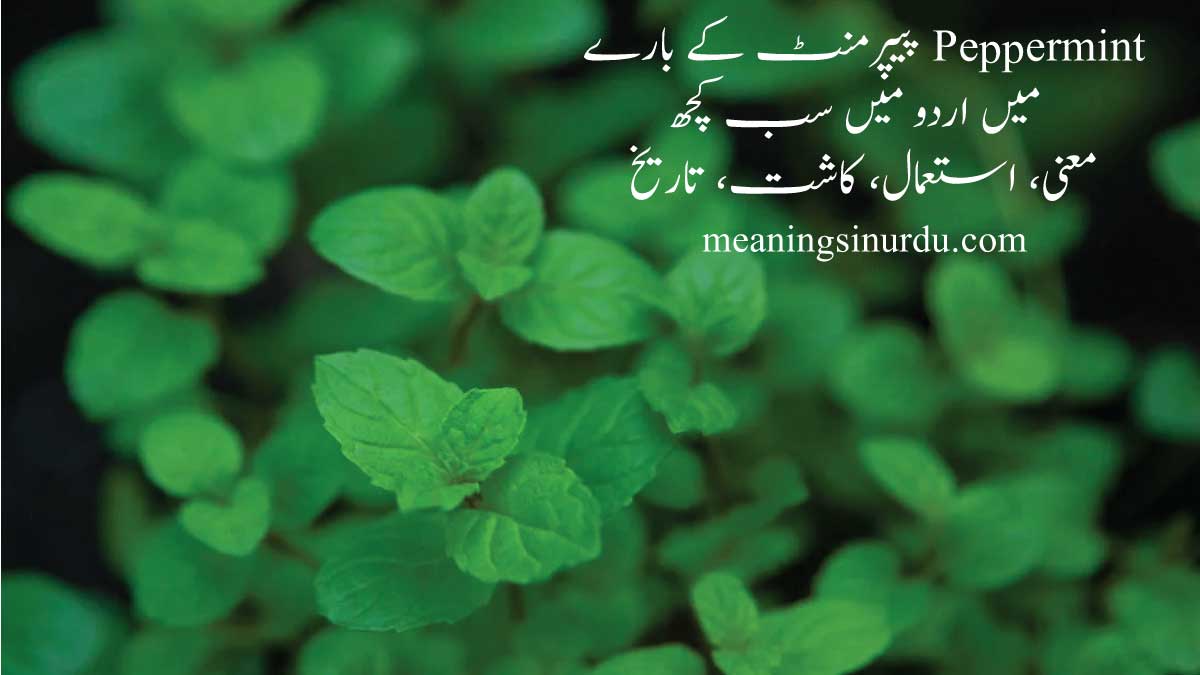In Urdu, Peppermint is called پودینہ (Podina). The word Podina consists of four letters: پ (P), و (O), د (D), and ن (N). Peppermint is widely used in Urdu-speaking regions for its refreshing flavor and medicinal properties. The leaves are often used in cooking and herbal remedies.
Introduction to Peppermint in Urdu
Peppermint, known as پودینہ (Podina) in Urdu, is a popular herb cherished for its invigorating flavor and health benefits. Native to Europe and the Middle East, this aromatic plant is widely used across the world, including in Urdu-speaking regions. In Urdu cuisine and traditional medicine, Podina is valued for its refreshing taste and its ability to aid digestion. From flavoring foods and beverages to its use in home remedies, Peppermint plays a significant role in daily life and cultural practices.
What is Peppermint in Urdu?
In Urdu, Peppermint is referred to as پودینہ (Podina). This term encompasses the various varieties of the Mentha genus, with Peppermint (Mentha × piperita) being the most common. Podina is renowned for its cooling sensation and distinctive, refreshing aroma. It is used both in culinary applications and in traditional medicine. The herb is often associated with soothing digestive issues, alleviating headaches, and providing a calming effect. In Urdu-speaking households, Peppermint is a staple in both everyday cooking and herbal treatments.
Peppermint in Different Languages
| Language | Name |
|---|---|
| Urdu | پودینہ (Podina) |
| English | Peppermint |
| Hindi | पुदीना (Pudina) |
| Arabic | نعناع (Na’na) |
| Spanish | Menta |
How to Use Peppermint in Urdu Cuisine
Peppermint is widely used in Urdu cuisine for its refreshing flavor and health benefits. Here’s how Podina is incorporated into various dishes:
Chutneys: Podina is a key ingredient in many chutneys, adding a fresh, zesty flavor. It is often blended with other herbs and spices to create vibrant and flavorful condiments.
Tea (Chai): Fresh or dried Peppermint leaves are added to tea (chai) to impart a cooling effect and a pleasant aroma. This preparation is popular for its soothing and refreshing properties.
Salads: Podina leaves are used in salads to provide a burst of flavor and enhance the overall taste of the dish. It pairs well with cucumbers, tomatoes, and other fresh vegetables.
Rice Dishes: In some traditional recipes, Peppermint is used to flavor rice dishes, offering a unique and aromatic twist to the meal.
Popular Uses of Peppermint
| Dish Type | Use of Peppermint |
|---|---|
| Chutneys | Fresh Podina leaves blended with spices |
| Tea (Chai) | Added for a refreshing and soothing flavor |
| Salads | Fresh leaves added for flavor and garnish |
| Rice Dishes | Used to impart a unique, aromatic taste |
Growing Peppermint at Home (پودینہ کو گھر میں اُگانا)
Growing Peppermint at home is straightforward and can be done with the following tips:
Climate: Peppermint thrives in a temperate climate but can also be grown in indoor pots. It prefers moderate temperatures and plenty of sunlight.
Soil: The plant grows best in rich, well-drained soil with a pH of 6.0 to 7.0. Adding compost or organic matter can improve soil quality.
Planting: Peppermint can be grown from seeds or cuttings. Plant in containers or garden beds, ensuring adequate spacing to allow for spreading.
Care: Water regularly to keep the soil moist but not waterlogged. Peppermint enjoys full sun to partial shade. Harvest leaves as needed, and trim the plant periodically to encourage bushier growth.
Explore: Ashwagandha In Urdu
Cultural Importance of Peppermint in Urdu Tradition
Peppermint, or پودینہ (Podina), holds cultural and medicinal significance in Urdu-speaking regions. The herb is often used in traditional remedies to treat digestive issues, such as indigestion and nausea. Its refreshing flavor and soothing properties make it a common addition to various foods and beverages. In cultural practices, Podina is believed to have cooling and calming effects, and it is often included in home remedies and medicinal preparations. Its presence in daily life underscores its importance in promoting health and wellness within Urdu-speaking communities.

